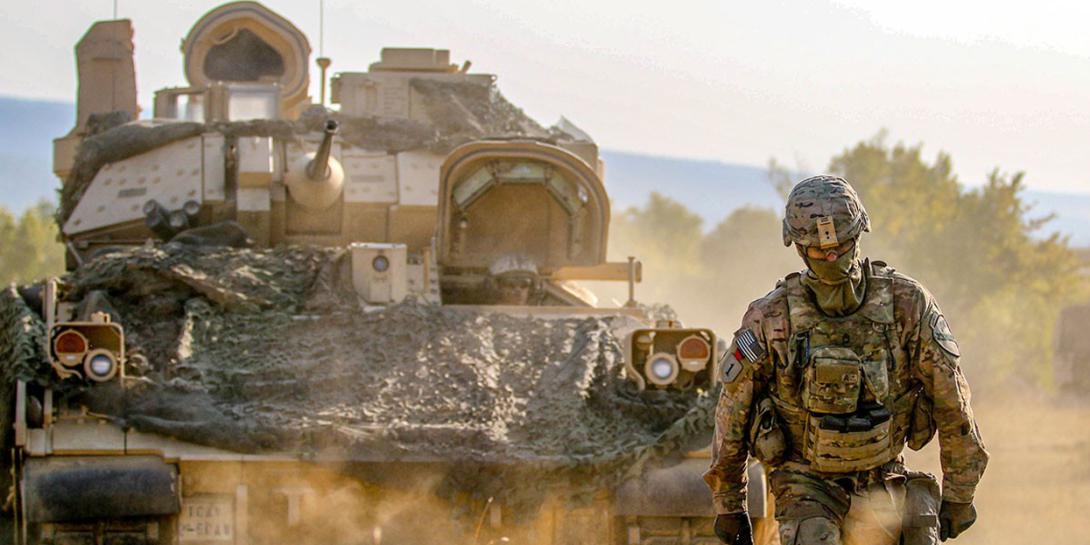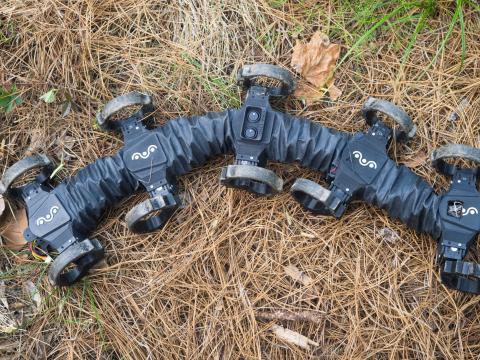Army Seeks Open Architecture for Optionally Manned Fighting Vehicle
Today, the U.S. Army issued the final request for proposals for the Optionally Manned Fighting Vehicle (OMFV) concept design phase. The request for proposals asks for a common modular open architecture that will allow the rapid insertion of new software capabilities as they become available.
The open architecture is considered a critical element of the future vehicle, which will be capable of being either manned or unmanned. “Our future capability is going to largely be driven by our ability to rapidly insert capability digitally through software,” Brig. Gen. Glenn Dean, the program executive officer for Ground Combat Systems, told reporters in a virtual media roundtable shortly after the request for proposals was released. “Our current legacy vehicles were not designed with highly modular and highly open architectures that make it easy for us to take a small capability that might have been developed by a niche provider and bring that in and apply that at the speed at which technology can develop.”
Gen. Dean indicated that updating software on the future vehicles needs to be as easy as downloading a new app on a cellphone. “That’s the speed that we need to move in the future. The fact of the matter is, we’re not postured to do that today because the architecture that we build systems for didn’t take that vision into account. Building that into our systems is key,” he said.
He added that the government already has a number of open architectures, including Common Modular Open Suite of Standards and VICTORY. Victory includes acronyms within acronyms. It stands for Vehicular Integration for Command, Control, Communications, Computers, Intelligence, Surveillance and Reconnaissance/Electronic Warfare. The Army intends to pull together elements of the various architectures. “What we’re trying to do is pull the common threads from those.”
Rather than electronic cables with unique, proprietary connectors, for example, Army officials envision potentially using fiber optics. The architecture development effort will begin in January and run parallel to and feed into the vehicle contract activities in phase two.
Elements of the architecture potentially will be used for a wide array of tactical and combat vehicles, such as the family of Next-Generation Combat Vehicles, including the Remote Combat Vehicle system and other robotic systems. The OMFV is the lead activity for that common modular approach for ground vehicles.
The OMFV can be either manned or unmanned and will need a certain amount of autonomy and artificial intelligence. For example, it could potentially use teleoperation, way point navigation, obstacle avoidance, all of which are common robotic capabilities. Army officials say, however, that they are not looking for a vehicle to make critical decisions. Instead, they want a level of autonomy that follows strict rules set by humans.
Still, artificial intelligence will play a critical role. “The vehicle is a member of the crew and is enabling the personnel on it to perform their function. That means we’ve got to offload tasks to the platform,” Gen. Dean stated. “You have all kinds of tasks you can perform with a smartphone today that are enabled by apps. What are the apps of the future that we can put on a combat platform that will enable the crew?”
The concept design phase will require no physical prototypes. “This is a digital concept only. Those digital concepts will be improved between industry and the government working together with soldier input,” Brig. Gen. Ross Coffman, director of the Next Generation Combat Vehicles Cross Functional Team, told reporters.
The request for proposals also does not include defined requirements. Rather than the traditional requirements, the Army has listed nine characteristics they would like to see, enabling industry to be more innovative with their solutions. Some of those characteristics are described in the document as “characteristics of need” and are considered mandatory.
Being optionally manned with some robotic capabilities is one of those characteristics of need. The others include survivability against a wide array of enemy systems; mobility so that it can maintain a pace with other vehicles; growth, meaning it can be continuously upgraded for a long time; lethality at longer ranges than enemy systems offer; weight that allows it to cross 80 percent of the main supply routes in Eastern Europe; logistics, meaning it would include diagnostics similar to modern automobiles; global transportability by plane, train and ship; manning that includes a two-person crew and 30 people being transported with a third control station to allow someone in the back of the vehicle to augment the crew if necessary; and training via a synthetic training environment.
Furthermore, the Army includes no classified annexes, which makes it easier for small businesses and international companies to compete.
Written proposals are due 120 days after the release of the RFP, and it is anticipated to result in the award of up to five contracts in 2021 under a full and open competition.
The overarching five-phase strategy for the OMFV program focuses on encouraging innovation, maximizing competition throughout the entire program and producing a transformational infantry fighting vehicle that will dominate maneuvers in multidomain operations, Army officials say.
The service plans to field the OMFV to both active and National Guard armored brigade combat teams starting in fiscal year 2028. About $4.6 billion is currently invested in the program from fiscal 2020-2026.





Comments